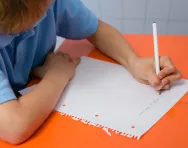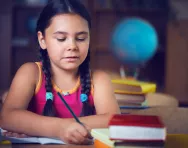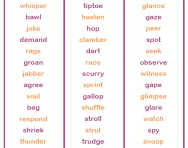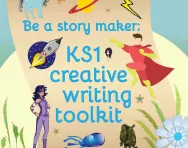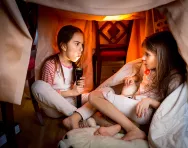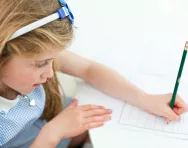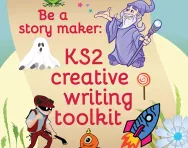Important update from TheSchoolRun
For the past 13 years, TheSchoolRun has been run by a small team of mums working from home, dedicated to providing quality educational resources to primary school parents. Unfortunately, rising supplier costs and falling revenue have made it impossible for us to continue operating, and we’ve had to make the difficult decision to close. The good news: We’ve arranged for another educational provider to take over many of our resources. These will be hosted on a new portal, where the content will be updated and expanded to support your child’s learning.
What this means for subscribers:
- Your subscription is still active, and for now, you can keep using the website as normal — just log in with your usual details to access all our articles and resources*.
- In a few months, all resources will move to the new portal. You’ll continue to have access there until your subscription ends. We’ll send you full details nearer the time.
- As a thank you for your support, we’ll also be sending you 16 primary school eBooks (worth £108.84) to download and keep.
A few changes to be aware of:
- The Learning Journey weekly email has ended, but your child’s plan will still be updated on your dashboard each Monday. Just log in to see the recommended worksheets.
- The 11+ weekly emails have now ended. We sent you all the remaining emails in the series at the end of March — please check your inbox (and spam folder) if you haven’t seen them. You can also follow the full programme here: 11+ Learning Journey.
If you have any questions, please contact us at [email protected]. Thank you for being part of our journey it’s been a privilege to support your family’s learning.
*If you need to reset your password, it will still work as usual. Please check your spam folder if the reset email doesn’t appear in your inbox.
Creative writing techniques for kids: a step-by-step guide to writing a story
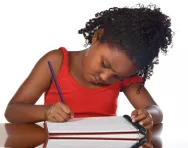
The way literacy is taught in primary schools has changed radically in the last couple of decades; when I was at school in the 80s we copied from blackboards, had whole hours of handwriting practice and sweated over spellings without any formal teaching of phonics whatsoever. While I think the more structured approach to literacy teaching we see in classrooms today makes learning more fun and accessible, my one worry is that there’s little time left for writing creatively.
When I was at school I adored writing stories – even stories with chapters and illustrations. I know my author brother did too – we found some of his old stories a few years back, and I felt so pleased he’d had the time to write these endless pages of action, adventure, characterisation and twisting plotlines.
As a primary teacher I ensured I would have a week each term when, during literacy sessions, we would focus solely on creating stories. I wasn’t deviating from the curriculum – far from it. During this week children would be consolidating their learning of phonics and be ‘writing for purpose’, considering carefully the aspects of story and who their audience might be.
It may very well be that your children write stories at home regardless of whether they’re required to for school, because most children have a seemingly natural urge to want to do so from time to time. This is just a little guidance on how you can support them and encourage a more structured approach to their story writing.
Plot planning
Firstly, ask your child where the story is going to take place. It could be somewhere fictional or real, it could be a planet, a country, a town or a house – anywhere!
Then, ask when the story is taking place – now? In the future? In the past?
Finally ask what they think is going to happen. Remember that this doesn’t have to be accurate and they don’t have to stick to what they say; many of the best writers say that their plots develop organically as they write. If they do have a firm idea of where they want to go with the plot, though, they can create an outline by completing a story planner, which could look something like this:
- First….
- Then…
- Next…
- And finally….
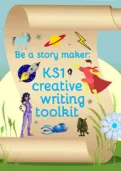
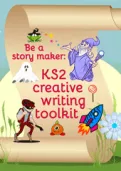
Download a FREE Creative Writing toolkit!
- KS1 & KS2 workbooks
- Bursting with fill-in prompt sheets and inspiring ideas
- Story structure tips, style guides and editing suggestions
Characterisation
Ask your child who is going to be in the story. How do they want their readers to feel about each character? Again, they may want to jot some ideas down. You could make a table for them to help them organise their thoughts, with these headings:
- Name of character
- Relationship to other characters
- What he/she looks like
- Behaviour
Story language
Ask your child to think of some fabulous words to use in their story writing. They might be long words or simple ones, or they might be great descriptive words or words that help create pace and tension. Encourage them to jot these down and refer to the list as they write their story.
Story starters
All writers know that you’ve got to capture the attention of your readers right from the start; you want to make them desperate to read on. Ask your child to think of some good story openers that’ll entice people to find out more. Here are a few examples:
First sentences that are mysterious…
Molly had no sense of the day that lay ahead.
Story starters that use language tricks like alliteration…
It was damp, dark and dreadfully dusty when Molly entered the house.
Story openers that create tension…
Molly could hear her heart beating faster than ever before. Could this really be happening?
Stories that go straight into dialogue…
“But I don’t want to go to school, Mummy,” groaned Molly.
Encourage your child to look at some of the books they like to read and see how they begin in order to offer inspiration.
Get writing!
Once they’ve got all of these ideas in place, they can start writing. They could do a draft in the first instance and then a neat, polished version later. They may wish to write in short chapters, use illustrations, or make their own book to write in – let them use their imagination and creativity when it comes to presentation, and make sure you show how much you value the end product by keeping it to read again with the other books in your house.
If your child finds writing a story a little daunting, start with something small from our list of 9 fun writing projects to do with your children.
We also recommend the free art and creative writing challenges on the Night Zookeeper website; your child will be contributing to a co-created animated television show.
You could also try a great story-making app and get your child writing fiction on their tablet!
Plus, find out how to support storytelling skills for children in EYFS, KS1, KS2 and KS3 to get them thinking about story elements, plot and character development.

